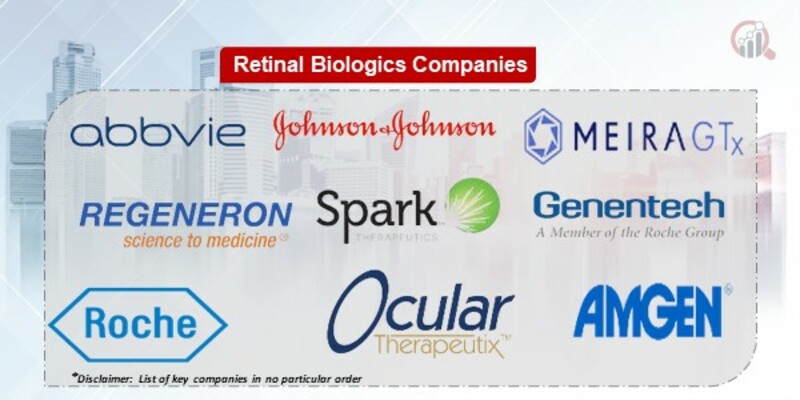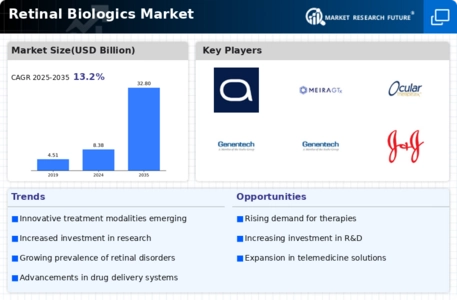Top Industry Leaders in the Retinal Biologics Market

Latest Retinal Biologics Companies Update:
Regeneron Pharmaceuticals (US) Received FDA approval for the expanded use of EYLEA® (aflibercept) for the treatment of diabetic macular edema (DME) with persistent center-point fluid after prior anti-VEGF therapy. Partnered with research institutions to develop next-generation retinal biologics targeting multiple pathways for improved disease management.
Roche (Switzerland) Announced positive Phase III results for their FARICIMAB (VABY88A), demonstrating its non-inferiority to aflibercept in treating wet AMD. Collaborated with healthcare providers to expand access to retinal biologics treatments and improve patient outcomes.
Genentech (US) Launched their LUCENTIS® (ranibizumab) prefilled syringe for DME and wet AMD, offering enhanced convenience for both patients and healthcare professionals. Focused on developing long-acting biologics, potentially reducing the frequency of injections and improving patient compliance.
Novartis (Switzerland) Received FDA approval for their Beovu® (brolucizumab) for the treatment of wet AMD, offering extended dosing intervals compared to other anti-VEGF drugs. Partnered with ophthalmic societies to provide educational resources and training programs on the use of retinal biologics in clinical practice.
American Academy of Ophthalmology (AAO) Updated their guidelines for the management of wet AMD and DME, highlighting the role of retinal biologics as primary treatment options. Launched initiatives to advocate for improved access to these therapies and promote patient education about retinal diseases.
List of Retinal Biologics Key companies in the market
- Amgen, Inc.
- AbbVie Inc.
- MeiraGTX Limited
- Regeneron Pharmaceuticals Inc
- Ocular Therapeutixc.
- Spark Therapeutics
- Hoffmann-La Roche Ltd.
- Genentech
- Johnson & Johnson









